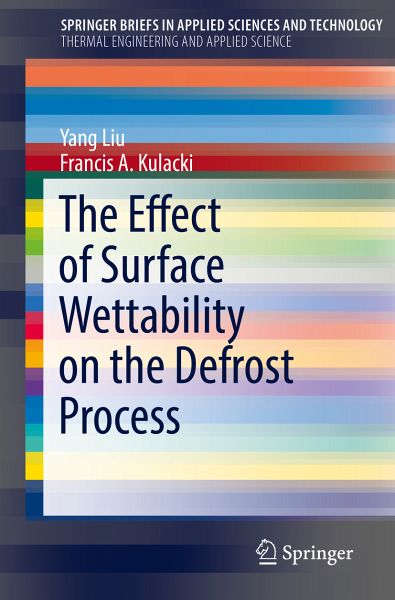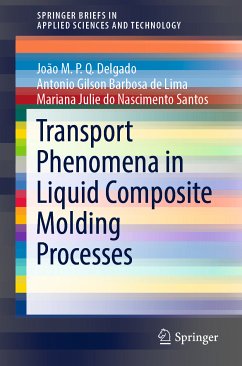
The Effect of Surface Wettability on the Defrost Process (eBook, PDF)
Versandkostenfrei!
Sofort per Download lieferbar
40,95 €
inkl. MwSt.
Weitere Ausgaben:

PAYBACK Punkte
20 °P sammeln!
This SpringerBrief presents a recent advancement in modeling and measurement of the effect of surface wettability on the defrost process. Carefully controlled laboratory measurements of the defrosting of cooled surfaces are used to reveal the effect of surface wetting properties on the extent and speed of frost removal by melting or slumping. The experiments are accompanied by visualization of frost removal at several defrosting conditions. Analysis breaks the defrost process into three stages according to the behavior of the meltwater. Surface wetting factors are included, and become signific...
This SpringerBrief presents a recent advancement in modeling and measurement of the effect of surface wettability on the defrost process. Carefully controlled laboratory measurements of the defrosting of cooled surfaces are used to reveal the effect of surface wetting properties on the extent and speed of frost removal by melting or slumping. The experiments are accompanied by visualization of frost removal at several defrosting conditions. Analysis breaks the defrost process into three stages according to the behavior of the meltwater. Surface wetting factors are included, and become significant when sufficient meltwater accumulates between the saturated frost layer and the surface. The book is aimed at researchers, practicing engineers and graduate students.
Dieser Download kann aus rechtlichen Gründen nur mit Rechnungsadresse in A, B, BG, CY, CZ, D, DK, EW, E, FIN, F, GR, HR, H, IRL, I, LT, L, LR, M, NL, PL, P, R, S, SLO, SK ausgeliefert werden.












